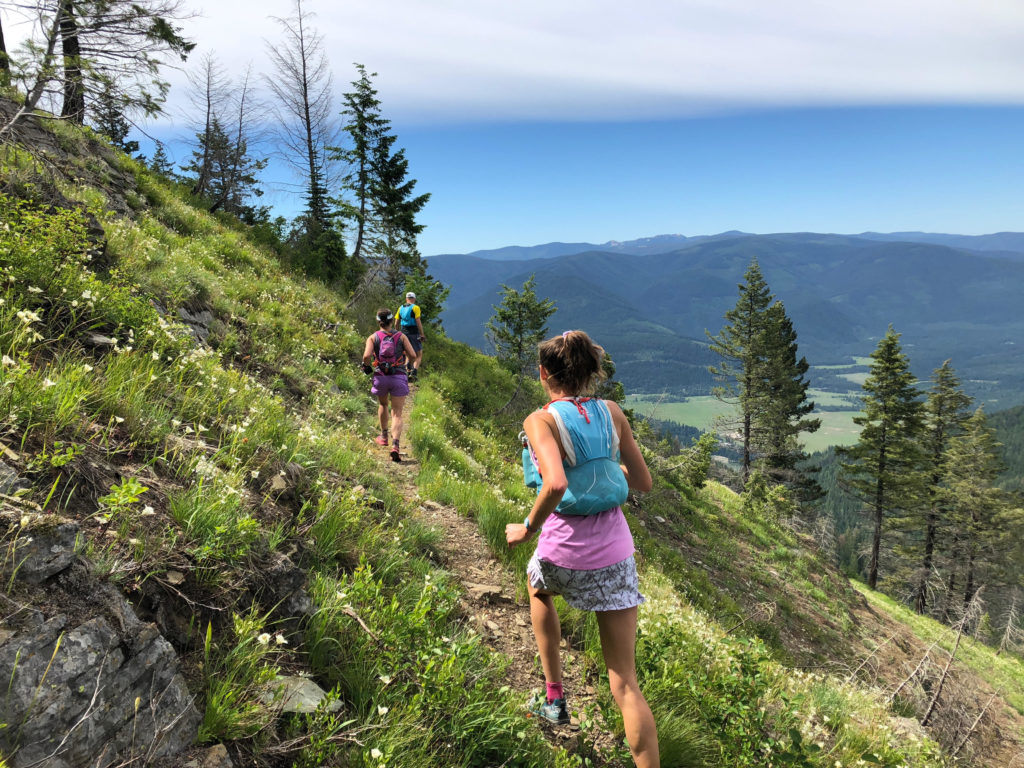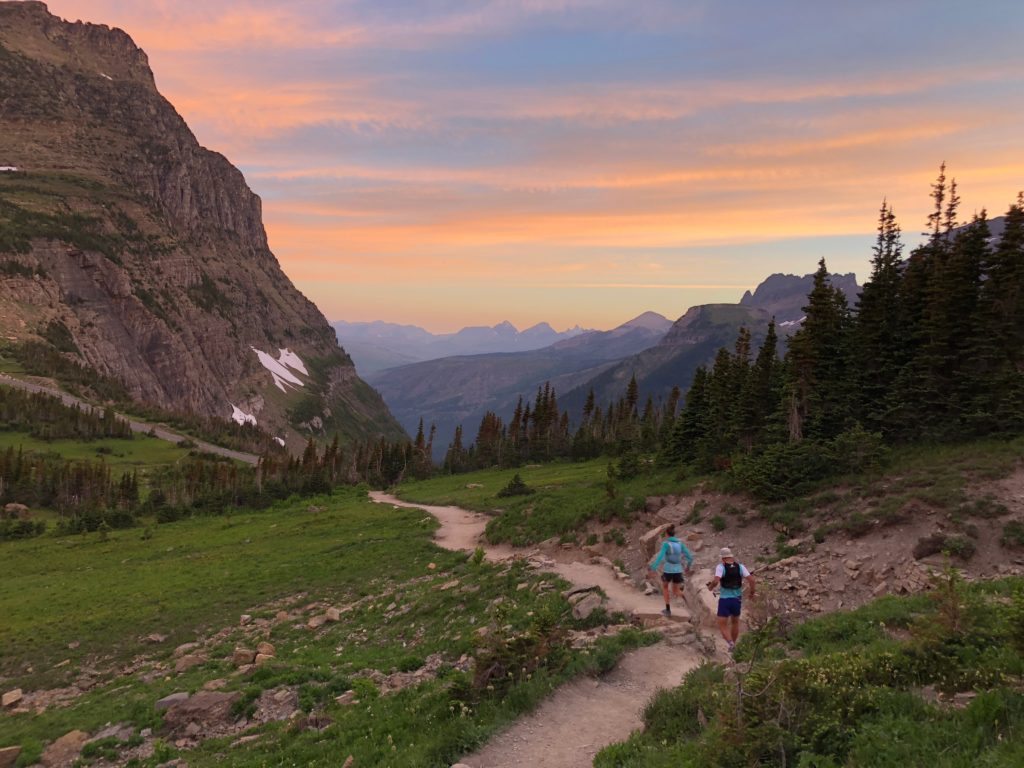Do you ever feel like just one day spent running in the mountains, loping over root-covered terrain, climbing up scree fields, whirling around switchbacks, and watching the sky change colors with the shifting sun is not enough? Or that getting up at dawn for a long run and having to rush back to your car by evening time feels like you’re missing out on more fun?
Well, we agree. Sometimes one day is just not enough time for running in the mountains. And we are not alone in feeling this way. Multi-day runs have been growing in popularity for years, and the Inland Northwest has more than enough trails and mountain wilderness to accommodate these trips.
Multi-day run trips are a combination of long-distance trail running and backpacking, commonly called “fastpacking.” Once figured out and properly prepared for, it gives you the best of both worlds: more time outside and more ground covered than your average weekend running or hiking trip.

Fastpacking Essentials
Planning:When preparing to spend several days in the wilderness and away from access to goods and services, a bit of planning can go a long way. This planning extends to drawing out a route, checking any up-to-date weather and trail conditions pertinent to your location, deciphering camp spots and water sources, learning about potential wildlife encounters, meal prepping, and packing appropriate gear.
Nutrition:Just like any other endurance activity, keeping yourself properly fueled is essential for having a positive experience and staying safe. More pronounced than with backpacking, carrying all of your food and water on your back during a run can be cumbersome and painful if not approached strategically. Although it will take time to figure out which foods will prove best for your body and your backpack, dehydrated goods like oats, powdered potatoes, or packaged freeze-dried meals are a good place to start. In addition to your regular run-fuel items, dehydrated foods will work as pre and post-run meals that won’t weigh you down.
Hydration:Consider your access to fresh water sources along your planned route. Bring a filter or purification tablets along with your pre-filled bladders and bottles. Having enough liquids to maintain your hydration for the duration of your trip is key, especially when accounting for your increased need from perspiration and food prep.
Apparel:Just like with backpacking and trail running, having the right clothing for any condition you’re likely to encounter allows for a more enjoyable experience, no matter what the Inland Northwest weather throws at you. Additionally, having a change of clothes for your non-running hours offers a little reprieve from your sweat-covered t-shirt and shorts while you rest.
Gear:First things first, you’re going to need a backpack. Your pack needs to be big enough to hold everything you need, while still being comfortable enough to run in. Brands like Ultimate Direction and Solomon make fastpack-specific packs, designed to hold between 15-25 liters of gear while distributing the pack load between chest, shoulder, and side straps. These packs have a multitude of pockets and can expand and collapse as you need more and less space.
Next, you’ll need equipment for camping. Collapsible cooking pots and burners or small jet boils offer hot meal options and are worth packing if you have room. Weather depending, simply tie a tarp above your lightweight sleeping bag or hang a small hammock for tree-dense areas. If there’s rain in the forecast, carry your lightest tent and fly.
Other essentials:Put together a small first aid kit, just as you would with backpacking and running, including essentials such as bandages (large and blister-sized), antibacterial ointment, athletic tape, benadryl, sunscreen, aspirin, baby wipes, and an irrigation syringe. Other useful items to consider include small amounts of rope, bear spray, a headlamp, toilet paper, instant coffee, trekking poles, spork and knife, a portable cell phone charger, and a map.

Favorite Spots for Fastpacking
The good news is you can fastpack anywhere you’d through hike, but as you’ll be running instead of backpacking, you can cover more ground. Hikes that would usually take 3 to 4 days can be finished in 2 days, depending on your fitness level and comfort in long distance running.
Hells Canyon, Idaho
Style: Out-and-Back
Distance: Up to 40 miles
Length: 2+ days
Run along the Snake River on the Idaho side of Hells Canyon on this picturesque out-and-back. With riverside campsites along the way, run out as far as 20 miles before setting up camp. When morning comes and the light hits the valley differently, it will feel like a new run on the way back to your car.
Long Canyon, Idaho
Style: Out-and-Back
Distance: 28 miles
Length: 2 days
Run through an old growth forest and along a rushing creek North of Bonner’s Ferry and just below the Canadian border. Trail #16 is remote, with creek crossings throughout the spring and into the summer, and is often used by equestrians. There’s a rugged campsite just before mile 14.
Salmo-Priest Loop, Washington
Style: Loop
Distance: 20 miles
Length: 1.5 days
Outside of Colville, WA, it doesn’t get much more remote than the Salmo-Priest Loop. Boasting old growth forest, the Salmo river, and = mountain views, this trail is amazing.
Kettle Crest Trail, Washington
Style: Point-to-Point
Distance: 44 miles
Length: 3 days
Run along the ridge of Eastern Washington’s highest peaks, through sage-brush meadows, along wildflower paths, and gain almost 8,000 ft as you traverse the Kettle Crest Trail. As to not miss any of the spectacular views, we recommend this trip as a point-to-point by shuttling your vehicles with friends.













